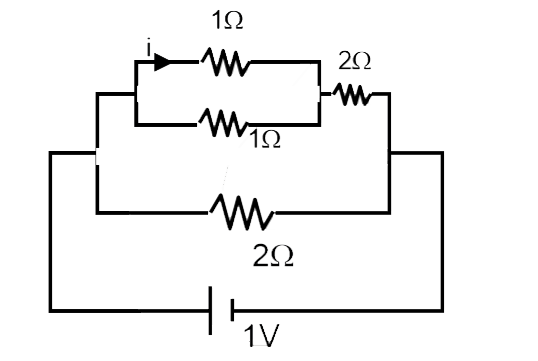In a common base transistor circuit, IC is the Output current and IE is the input current. The current gain α is
Greater than one
Less than one
Equal to one
None of these
The correct Answer is:B
To find the current gain α in a common base transistor circuit, we can follow these steps:
Step 1: Understand the relationship between the currents
In a common base configuration, the input current IE (emitter current) is related to the output current IC (collector current) and the base current IB by the equation:
IE=IC+IB
Step 2: Express IC in terms of IE and IB
From the equation above, we can rearrange it to express IC:
IC=IE−IB
Step 3: Define the current gain α
The current gain α in a common base transistor is defined as the ratio of the output current IC to the input current IE:
α=ICIE
Step 4: Substitute IC into the current gain formula
Now we can substitute the expression for IC from Step 2 into the formula for α:
α=IE−IBIE
Step 5: Simplify the expression
We can simplify the expression for α:
α=1−IBIE
Step 6: Analyze the value of α
Since IB (base current) is always a positive quantity, the term IBIE will also be a positive quantity. Therefore, α will always be less than 1:
α<1
Conclusion
Thus, the current gain α in a common base transistor circuit is less than 1.
In a common base configuration, the input current IE (emitter current) is related to the output current IC (collector current) and the base current IB by the equation:
IE=IC+IB
From the equation above, we can rearrange it to express IC:
IC=IE−IB
The current gain α in a common base transistor is defined as the ratio of the output current IC to the input current IE:
α=ICIE
Now we can substitute the expression for IC from Step 2 into the formula for α:
α=IE−IBIE
We can simplify the expression for α:
α=1−IBIE
Since IB (base current) is always a positive quantity, the term IBIE will also be a positive quantity. Therefore, α will always be less than 1:
α<1
Thus, the current gain α in a common base transistor circuit is less than 1.
Similar Questions
Knowledge Check
The input resistance of a common emitter transistor amplifier, if the output resistance is 500kΩ, the current gain α=0.98 and the power gain is 6.0625×106 is
A198ΩB300ΩC100ΩD400ΩIf a change of 100μA in the base current of an n−p−n transistor in CE causes a change of 10mA in the collector current, the ac current gain of the transistor is
A50B100C200D150
In a common base transistor circuit, the current gain is 0.98. On changing the emitter current by 1 mA, the change in collector current is
View SolutionThe frequency of oscillation of current in the indcutor is

View SolutionIn a common emitter transistor, the current gain is 80. What is the change in collector current, when the change in base current is 250μA?
View SolutionIn a common emitter transistor amplifier, the output resistance is 500KΩ and the current gain β=49. If the power gain of the amplifier is 5×106, the input resistance is
View SolutionIn a common base transitor amplifier, the input and the output resistance area 500Ω and 40kΩ and the emitter current is 1.0mA find the input and the output voltages. Given α=0.95.
View SolutionThe current 'i' in the given circuit is

View Solution
